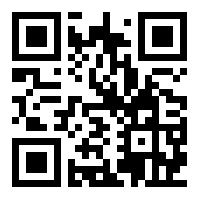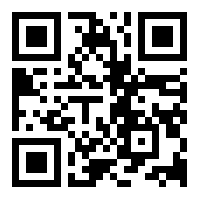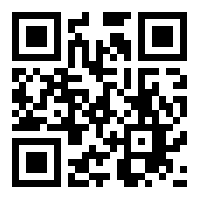Bloody Easy Blood Administration Version 3 Handbook
This handbook is a comprehensive, referenced resource for transfusionists (regulated health care professionals administering blood). It provides an overview of blood basics and blood components and products with essential learnings and actions to ensure blood is administered safely (reflecting Canadian Transfusion Medicine Standards and current literature).
Table of Content
- Blood Basics
- Blood Production
- Blood Group Systems
- ABO Blood Group System
- ABO Compatibility
- Rh(D) Blood Group System
- Rh(D) Compatibility
- Rh(D) Blood Group System and Pregnancy
- Urgent Transfusion (Bleeding Patient)
- ABO and Rh(D) Blood Groups Summary
- Blood Components – RBC, Platelets, Plasma, Cryoprecipitate
- Blood Products – Albumin, Fibrinogen Concentrate, Immunoglobulin: Intravenous Immunoglobulin,
- Immunoglobulin: Subcutaneous Immunoglobulin, Prothrombin Complex Concentrate,
- Rh(D) Immune Globulin
- Blood Components and Blood Products Summary
- Pre-Transfusion:
- Informed Consent
- Transfusion Order
- Group and Screen Testing:
- Test Information
- Uncrossmatched Blood
- Transfusing RBC to Females age 45 years and under with Childbearing Potential
- Collecting the Sample
- Preparing for Transfusion:
- The Patient
- The Equipment
- IV Access
- IV Fluid/IV Medication
- Tubing/Filter
- Devices: Infusion Pumps, Warmers, Rapid Infusers
- Picking up blood from Blood Bank/TML: Information/Documentation
- Handling of Blood Components Outside of Blood Bank/TML
- Administering Transfusion:
- Checking Blood Components (RBC, Platelets, Plasma, Cryoprecipitate): Steps 1 to 4
- Checking Blood Products (Plasma Protein Products): Steps 1 to 3
- Blood Products Requiring Reconstitution
- Beginning and Monitoring Transfusion:
- Patient Education
- Baseline Patient Assessment and Vital Signs
- Spiking the Blood Component/Blood Product
- Initial Rate of Infusion
- Ongoing Patient Assessment and Vital Signs
- Completing Transfusion
- Documenting Transfusion
- Massive Hemorrhage Protocol (MHP): the Bleeding, Unstable Patient
- Transfusion Reactions: Potential Complications of Transfusion
- Background
- Why Report?
- Acute Transfusion Reactions
- Signs and symptoms
- Immediate actions
- Key Signs and Symptoms and their Management
- FEVER
- URTICARIA (Hives)
- DYSPNEA
- HYPOTENSION
- Delayed Transfusion Reactions: Manifestation, Treatment, Prevention
- Summary: Transfusionist’s Accountability: Transfusion Checklist
- Appendices
- Appendix 1: Glossary of Terms/Abbreviations
- Appendix 2: ABO and Rh(D) Compatibility Chart
- Appendix 3: Practice your Learning: Blood Group Compatibility
- Appendix 4: Blood Components and Blood Products Table
- Appendix 5: Transfusion Risk Charts
- Appendix 6: Canadian Blood Services Label
- Appendix 7: Massive Hemorrhage Protocol (MHP): 7Ts Summary
- Appendix 8: TTISS-ON Acute Transfusion Reaction Chart
- Appendix 9: Practice your Learning: Acute Transfusion Reactions
- Appendix 10: Transfusion Checklist
- References
Attachment(s)
https://transfusionontario.org/wp-content/uploads/2021/08/Bloody-Easy-Version-3-Interactive-English-Final-Page-Spreads.pdfThe flipbook format can be viewed on any desktop computer, smartphone, or tablet. It features a linkable table of contents and search functionality enabling users to find information quickly and easily.
Attachment(s)
Provincial Recommendation Statements, Revised October 2021
Attachment(s)
https://transfusionontario.org/wp-content/uploads/2021/10/Recommendation-Statements_April-2021-1.pdfA 2018 national survey to gather information pertaining to perinatal testing and Rh Immune Globulin (RhIG)
Attachment(s)
https://transfusionontario.org/wp-content/uploads/2021/10/COPTN-Survey-Report-for-Ontario-2019-FINAL.pdfMassive Hemorrhage Protocol activation in a community hospital setting. Dr. Kimmo Murto, Children’s Hospital of Eastern Ontario, Ottawa

Attachment(s)
Massive Hemorrhage Protocol activation in an academic hospital setting
Dr. Jordan Tarshis, Sunnybrook Health Sciences Centre, Toronto

Attachment(s)
Massive Hemorrhage Protocol activation in an academic hospital setting
Dr. Andrew Petrosoniak, St. Michael’s Hospital, Toronto

Attachment(s)
This slide deck was created to be used by hospitals to present (at TC/MAC/Grand Rounds etc.) elements of the provincial MHP and explains how it can be adapted for your hospital.
Attachment(s)
https://transfusionontario.org/wp-content/uploads/2020/12/MHP_Generic-PP_FinalNov2320.pptRed Blood Cells, Platelets, Frozen Plasma – Adult
Attachment(s)
https://transfusionontario.org/wp-content/uploads/2020/09/Order-set-FINAL_MAR8.pdfThis educational module will explain the important role hospital communications plays in MHP when activating Code Transfusion as overhead page.